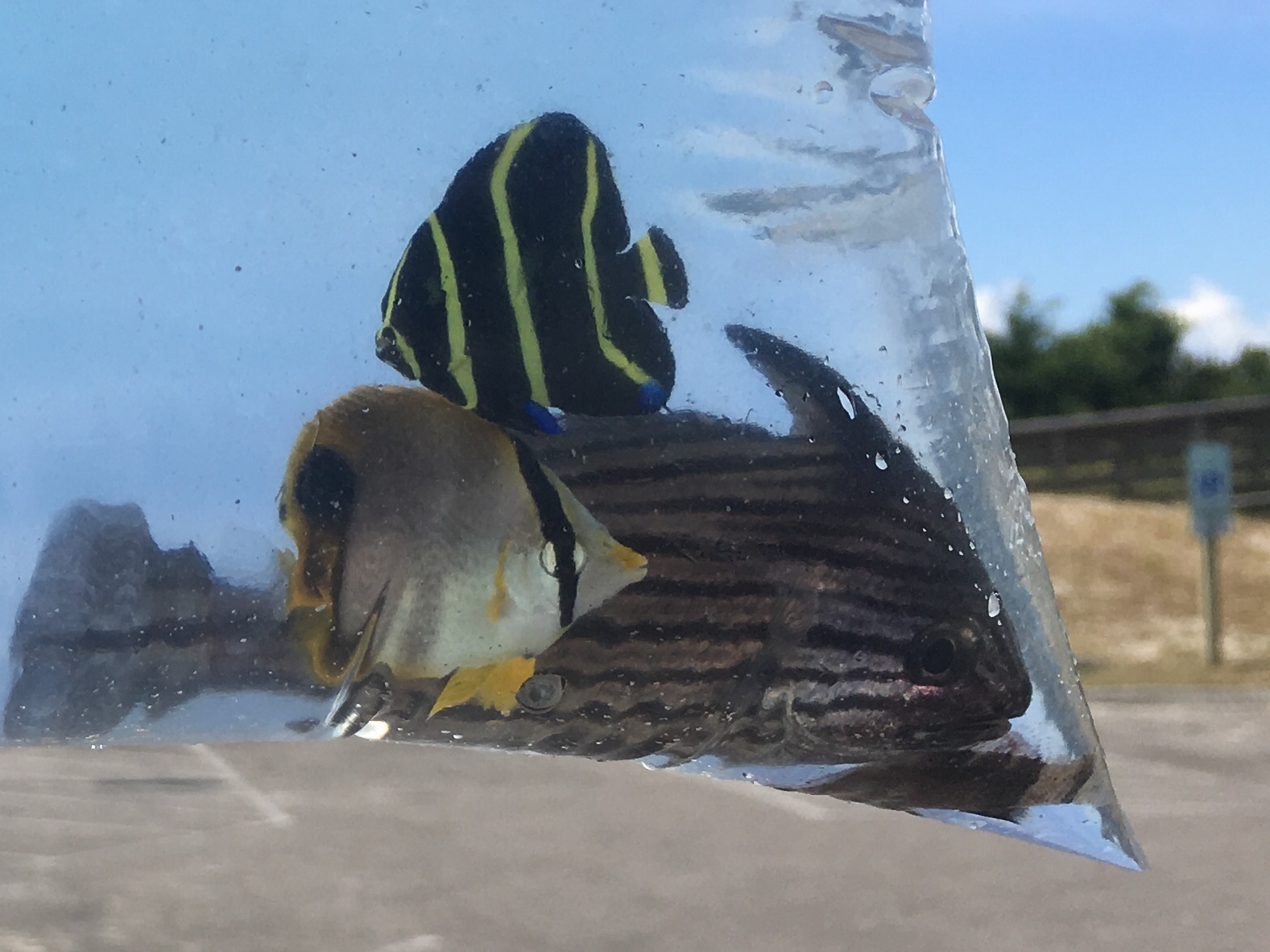
A nice haul of tropical strays from the Morehead City Bridge, including a spotfin butterflyfish, gray angelfish and high hat.
For land-bound divers like myself, bridges can provide some of the most interesting dive sites, especially if you live in a coastal area that isn’t endowed with natural rock formations. If you can find a bridge with legal parking and water access, that’s close enough to an ocean inlet for regular flushing with clean seawater, you’ll probably find that it’s already a popular dive site. If you’re a diver on Long Island, you undoubtedly are familiar with the Ponquogue Bridge in Hampton Bays and if you live in South Florida there’s a good chance you’ve been diving on the Blue Heron Bridge. The tall cement pilings that support bridges stand out like an oasis in an otherwise sandy or muddy desert. Corals, sponges and other encrusting invertebrates can’t get a foothold on these semi fluid sediments, but bridge pilings are able to support an impressive diversity of benthic plant and animal life, which in turn provide food and shelter for an abundance of ichthyofauna (that’s a fancy way of saying fish).
Upon settling in North Carolina, one of my first orders of business was to identify some shore-based dive sites. The bridges of our town, Swansboro, would work well as they are close to Bogue Inlet, but unfortunately, they are regularly overwhelmed with very low salinity water from the White Oak River. They do provide great habitat for euryhaline species and are popular for fishing, however the salinity swings keep diversity pretty low. The bridge from Cape Carteret to Emerald Isle spans a channel with higher and more stable salinity, but as there is no legal parking on either end, the pilings are only accessible by boat.
Thirty minutes up the coast, a series of bridges spans the highly industrial port of Morehead City. At first glance, the multitude of freighters, barges, and military vessels makes these channels appear less than appealing and the water quality probably isn’t exactly pristine, but there is a benefit to diving in a busy port. The channels are dredged frequently, ensuring a steady supply of new seawater with each tidal cycle. The geographic location of Morehead places it close enough to the Gulf Stream that there is significant tropical influence, so like the Ponquogue Bridge on Long Island, reef fishes are a common sight in the summer around pilings and other suitable habitat. Although inshore temperatures don’t remain high enough to support these fishes through the winter, there are a handful of warm temperate invertebrates that can survive here, near the limits of their thermal tolerance. These include the hard coral, Oculina sp. and the sea whip, Leptogorgia sp. as well as numerous colorful ascidians.
So far, the best shore dive I’ve found in the area is a bridge that connects Morehead City with Radio Island. On the Radio Island side there is a public boat ramp and fishing pier with ample parking. In general, the visibility is not up to the standards of most of my diving friends, but on a good day it can exceed 10 feet, placing it on par with Long Island diving. Below are several video clips from some of my best dives on this bridge. Although the 2018 dive season is quickly coming to an end, I may get in the water one more time, and I’ll certainly be reporting on the sites I have yet to discover in 2019.









0 Comments